Verizon 4G LTE: Two Datacards and a WiFi Hotspot Massively Reviewed
by Brian Klug on April 27, 2011 12:11 AM EST- Posted in
- Smartphones
- Samsung
- Verizon
- LTE
- 4G
- Pantech UML290
- USB551L
- Mobile
- MDM9600
4G LTE Performance Comprehensively Explored
So I’ve managed to do an absolute ton of drive testing with virtually every device. I’ve recorded 542 data points in total, and run countless more that I didn’t record just for subjective measure. My testing was done primarily in Phoenix, AZ over a number of weeks, though the dates are somewhat different for each device. In Phoenix, I drove a complete loop around the 202 while running continuous tests, and also tested downtown in central Phoenix, in Scottsdale, Mesa, Gilbert, Chandler, Tempe, and inside every major mall. I also tested the Pantech UML290 in Houston in the George Bush Intercontinental Airport, in Newark Liberty International Airport, and in Washington Dulles International Airport. Remember that even though in some markets Verizon has more 700MHz spectrum, right now Verizon’s LTE network only uses 10MHz channels, so performance really is comparable everywhere right now.
This first set of tests were taken using the Speedtest.net flash test to the Phoenix, AZ server. I tested across Windows 7 and XP on a Latitude XT, and later on a 2010 and 2011 MacBook Pro. I didn’t notice any throughput differences or other big differences between Windows or OS X beyond the software stability issues mentioned earlier. I’ve divided things among devices, though I haven’t collected as much data with the USB551L as I have the Pantech UML290. That said, given the same chipset you’d expect similar performance, and I’ve tested with both at the same locations and found them virtually identical.
First up is the all-important downstream measure. I’ve created histograms here, to show the complete performance distribution.
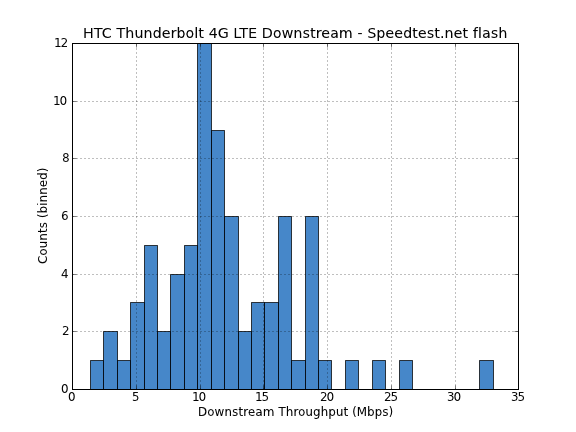
There’s been a lot of discussion centering around whether the speeds of these launch devices are representative of what loaded cells will look like. It’s really impossible for us to say for certain, however network operators have been known in the past to shape traffic so as to not create unrealistic expectations when cells start being loaded. I think there’s likely some of that going on, in addition to some genuine slowdown. I started the UML290 testing immediately after launch (1/22/11), and the data for it represents effectively the earliest set of samples I have. Testing on the Thunderbolt and Samsung SCH-LC11 were done later (mid April) and show a bit of a drop in throughput with a nice gaussian distribution starting to form around 10Mbps. With even more testing, I fully expect we'd see that shape even clearer. It’s obvious to me at least that some loading has happened, but speeds are still impressive. Keep in mind that Verizon’s advertised down speeds for their 4G LTE network are between 5 and 12Mbps.
My highest measured downstream throughput from speedtest.net on 4G LTE was actually on the Thunderbolt, at 32.96Mbps. I did see a peak of over 39Mbps briefly at one point on the Pantech UML290, as shown below.
Next is upstream, of which again I’ve created histograms. Note that the Thunderbolt is a 2x1 device while the others are 2x2, which explains some of the upstream throughput distribution difference. Verizon advertises upstream speeds of between 2 and 5Mbps, which seems justified if a bit less conservative than their downstream throughput advertising.
Finally is latency, which speedtest.net doesn’t do a super perfect job of characterizing, but does provide representative measures.
Sub-100ms latency most of the time is impressive, and makes LTE more than suitable for online gaming. I’ve put together a short video showing that playing CS:S over LTE is more than bearable.
I have found that often longer than expected latency is due to the fact that the PDN Gateway I connected to is located in California. This is very familiar to the Home Agent behavior in EVDO where cellular data is anchored to the internet somewhere very different from your actual physical location.
On the Pantech UML290 I also collected RSSI and SINR alongside each test as it started. This was somewhat laborious but I collected 218 tests alongside signal characteristics to illustrate how performance varies at cell center and cell edge. Note that again these numbers are from the VZAccess Manager, and I believe that SINR is being reported incorrectly, as higher SINR should correlate with better throughput. What I've plotted is data straight from the VZAccess Manager. If you'd like, I've zipped the data from the PantechUML 290 with RSSI, SINR, downstream, upstream, and latency up in CSV format here for anyone wanting to play around with it.
Throughput
Latency
Speedtest.net is great but I also ran a number of tests that were much longer just to prove performance isn’t limited to a rather small and quick speed test. I’m a fan of downloading huge things over both FTP and well seeded legal torrents. I have a 100Mbps synchronus box seeding Ubuntu torrents, which is generally one of the most well seeded torrents around and easily saturates 300+Mbps connections. I’ve seen speeds between 10 and 28Mbps downloading Ubuntu 10.10 over that connection on 4G LTE.
I’ve put together a short video showing me downloading some Ubuntu torrents, running speedtests, and browsing online while connected using the Pantech UML290.
As I mentioned before, the other part of the picture is how connectivity and handovers work between EVDO and LTE. I’ve timed the Thunderbolt taking 3-5 minutes to hand up to LTE from EVDO when driving into the Phoenix market with no activity, which is a bit long. I’ve also seen very fast handovers happen in the rare circumstance that signal is lost.
Sometimes there’s a brief pause in connectivity, but all in all behavior is pretty good and will improve in time. The screenshot above illustrates how sometimes throughput pauses as the context is transferred over; in this case I was streaming the YouTube performance test video at maximum resolution. The data cards I’ve tested are sometimes a bit finnicky about handing back up if you get stuck on EVDO; to do so they really want to go into EVDO dormancy state first instead of while a data transaction is ongoing. This is exactly how I’ve seen 1x to EVDO handovers happen in the past, and isn’t anything new.


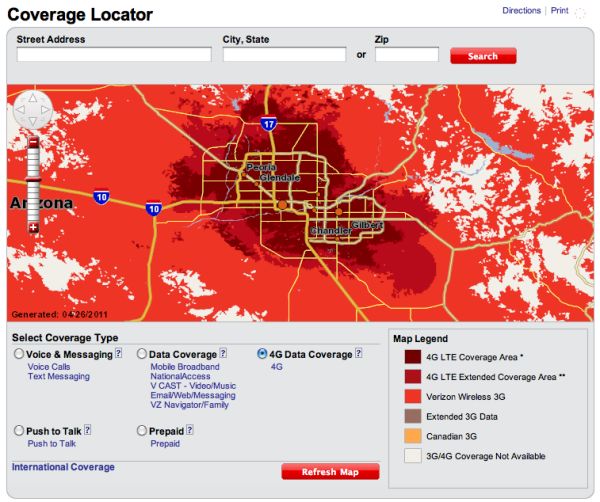
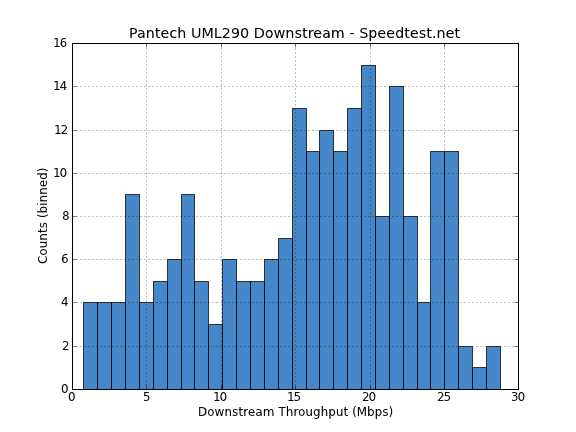
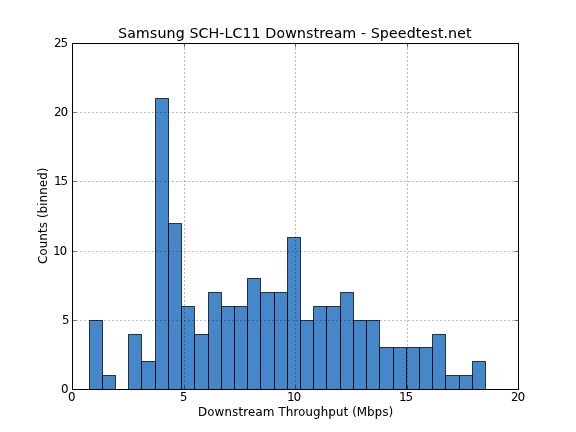
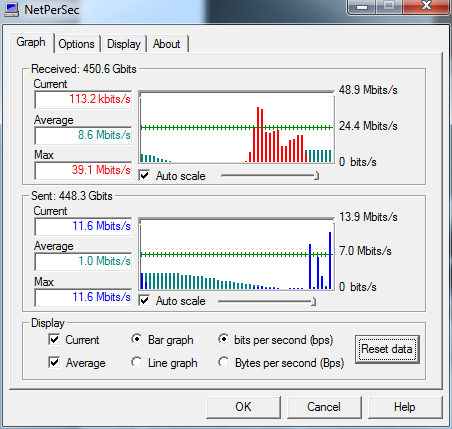
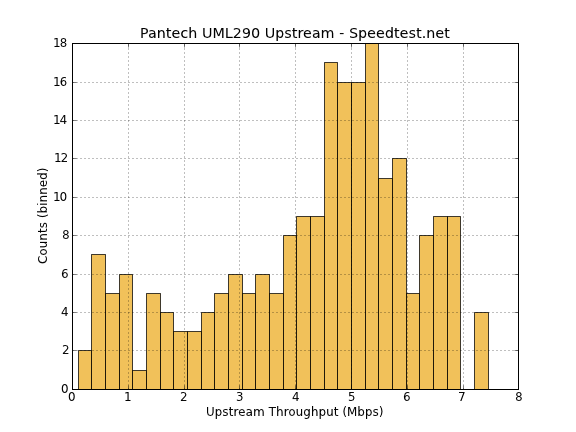

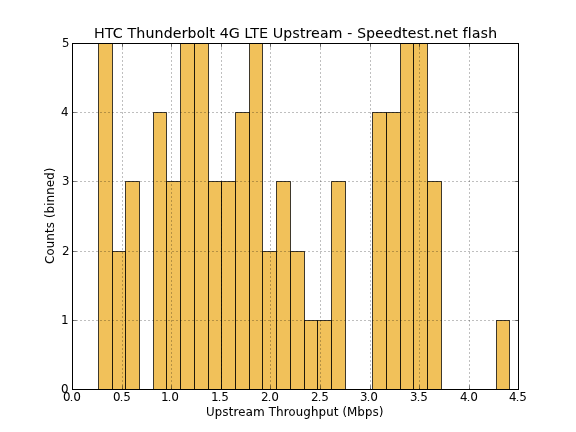
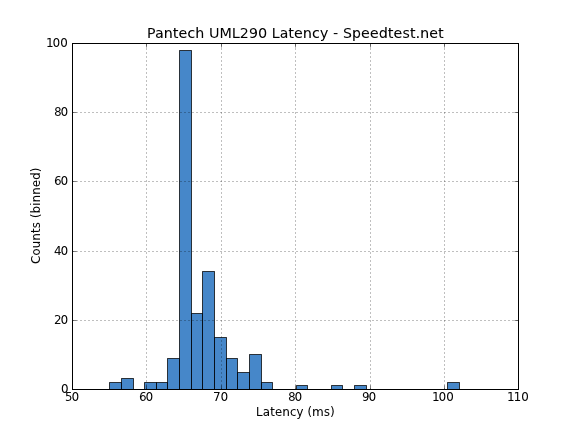
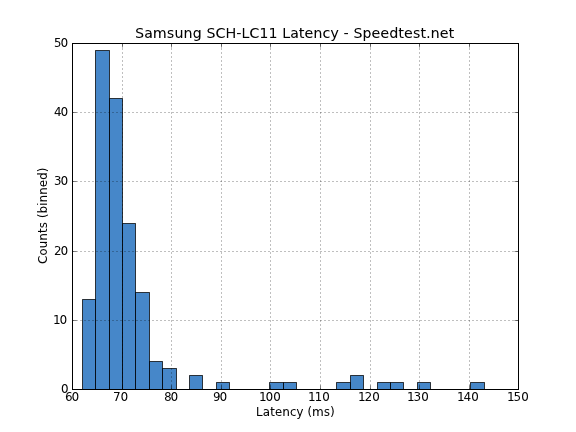
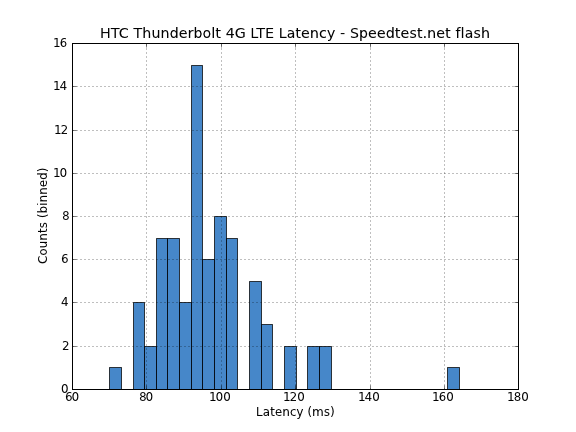
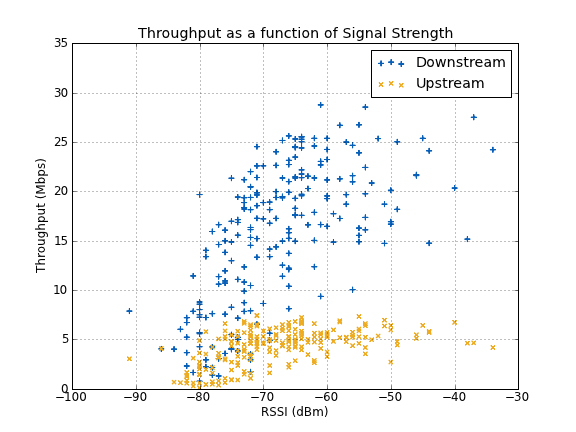
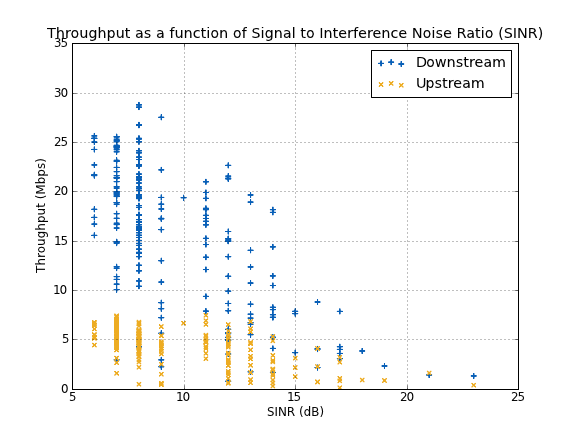
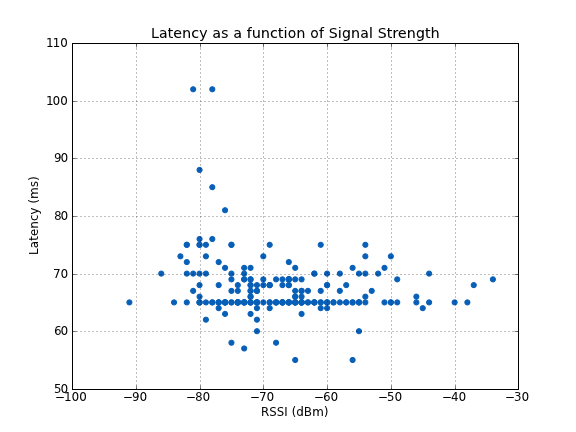
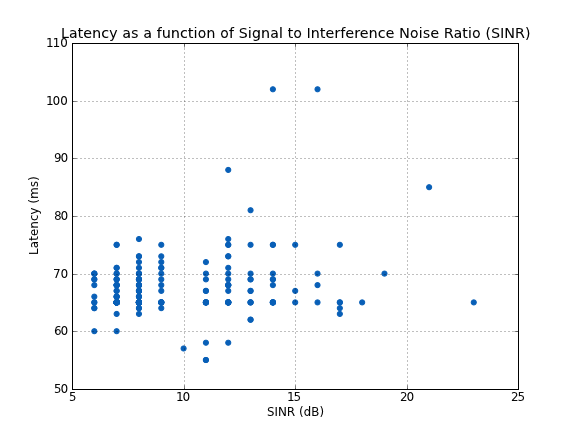















32 Comments
View All Comments
Brian Klug - Thursday, April 28, 2011 - link
I mentioned that with LTE sometimes the handovers pause the data context while the handover happens. It's an occasional 50-500ms pause, sometimes a second. Honestly I noticed it more on the data cards than I did the thunderbolt or the Samsung hotspot.That's another thing which will improve with time.
-Brian
iwod - Wednesday, April 27, 2011 - link
I dont think Bandwidth was much of a concern for mature 3G market. Even 1Mbps is good ( enough ) for web surfing. The problem is latency. And it is very high for 3G network,sometimes up to 1sec.LTE was suppose bring round trip performance down to double digit ms range. But my skip through of this article sees no test on Latency.
Another growing concern for me, is that Data and Mobile Network just dont seems to work. You have a finite amount of total bandwidth, but people consume data far greater then anyone would expect. I think someday we have to deploy national wide Micro WiFi + LTE station to help with bandwidth. Especially in populated city. ( I cant even imagine how would it even work out in place like Hong Kong and China )
Brian Klug - Thursday, April 28, 2011 - link
We tested latency on Page 10 if you're interested. Both latency as measured by speedtest.net (which isn't perfect) and by using pingplotter for almost 12 hours to a number of targets.It's sub 100 ms for a lot of things, and I showed gaming at 50ms to a local CS:S server. It's a definite improvement again thanks to much faster signaling and a shorter frame time.
-Brian
DanNeely - Thursday, April 28, 2011 - link
Unless I'm misunderstanding what the graph is showing, ATT's lower C block ownership is fragmentary with no coverage at all in large parts of the country.http://www.phonescoop.com/articles/article.php?a=1...
DanNeely - Thursday, April 28, 2011 - link
nevermind, I misunderstood what you were saying....bman212121 - Sunday, May 1, 2011 - link
I've seen another report from someone using LTE in New Orleans showing similar numbers. Anything sub 100ms should be fine for an fps. I've definitely seen worse under normal circumstances. FWIW using a D2 and comparing the ping times from the phones terminal to a pc using 3G hotspot, the wireless added 16ms latency.bman212121 - Sunday, May 1, 2011 - link
I have to wonder if they didn't include USB tethering simply because they couldn't sustain the power needed. If you were having issues with a 700ma charger than the maximum 500ma from a computer's usb port could be problematic. It is interesting though that the other devices worked, so I'm guessing that the wifi is what is really eating battery life.tjk818 - Wednesday, July 27, 2011 - link
I have the Pantech UML 290 and a cradlepoint router all updated with the latest firmware (4glte and 3g)works great on 3G now converting to 4g LTE using a ZADACOM feed cut for verizon746-806mhz and a grid antenna( Hyperlink ) . Without the grid I get 1 bar constant sometimes gong to 2 bars with the GRID I get nothing,Does the cable in the Pantech modem need to be connected or disconnected for it work on the grid , I live about 3 miles from the tower . also is there a setting that i can use in the VZAM menu ( under the DIAGVZW menu) that I can set the modem 4g port to activate the external antenna port and deactivate the internal antenna ? I’m using a specan I can see the carriers from the tower at 783mhz.
feed back is welcome
milan03 - Monday, August 22, 2011 - link
Hey Brian: you've mentioned that current Verizon LTE devices are category 3 meaning they can only achieve up to 50mbps with 2x10Mhz. Are you sure that's the breakdown because I'm seeing 50+mbps on a daily basis here in NYC and when downloading sustained well seeded torrent I'm seeing around 6MB/s which makes no sense. I am convinced that Thunderbolt is capable of 73mbps with all the overhead up to about 60mbps. Am I wrong? I dod have poor upload speeds which explains Thunderbolt being 2x1 MIMO not 2x2 like other devices, but is there any other LTE handset that's 2x2 MIMO?Here is what I'm seeing these days: [IMG]http://i51.tinypic.com/dhe1rd.png[/IMG]
oz973 - Tuesday, January 17, 2012 - link
How long does it take for this to charge to 100%? And how can you tell?